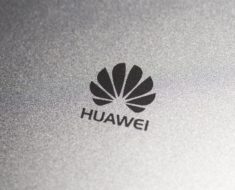Are you ready for internet so fast it’ll set your pants on fire? We’re not quite there yet, but 5G is getting us closer. Fifth-generation mobile networks, better known as 5G, can transmit data up to 100 times faster than the current 4G LTE. Most consumers will have to wait until 2020 to experience 5G, but there are rumors that the new technology could make its global debut at the 2018 Winter Olympics in South Korea.
Aside from allowing mobile users to tweet faster, 5G will have a major impact on the internet of things. For example, such fast and dependable connections will make self-driving cars safer and therefore closer to commercial availability. However, that’s just the tip of the iceberg: Wireless communication, wireless processing and even wireless charging will all soon be possible thanks to 5G.
How Will 5G Impact the IoT?
Cellular network latency has long been a limiting factor for the IoT. Latency is the amount of time it takes for a device to send and receive data. Smart devices that connect to the cloud produce too much data for today’s 4G networks to process quickly. The introduction of 5G will essentially eliminate that problem, which will lead to more efficient communication between connected devices.
Since latency issues have been a hurdle to companies embracing IoT technology, we’re likely to see a surge in new devices hitting the market soon. According to projections from Business Insider, we should expect to see 16 billion IoT devices online globally by 2020. That number will jump to 22.5 billion devices in 2021, which breaks down to about three devices per every person on the planet.
How Will 5G and the IoT Affect Industry?
Of course, this doesn’t mean that every child on earth will have three iPads. Most new IoT devices will be implemented by companies to improve automation and analytics. According to Jason Hope, over the next five years a total worldwide spending on IoT production and implementation is expected to average $1 trillion per year, which is almost as much as the entire US federal government’s annual budget.
The advent of 5G will be a game changer in more ways than one. In addition to data, 5G will enable the transfer of processing power between devices, which means that the tiniest electronics will be able to handle complicated computational tasks. The processing capabilities of a device will no longer be limited by its physical size. Thanks to 5G, the robot bees that will soon be pollinating our crops may possess human-like intelligence.
Follow @jasonhope on Twitter.
How Will 5G and the IoT Impact Consumers?
The roll out of 5G will be gradual, but hardware developers and telecom associations are already preparing for launch. According to a report from Ericcson, 15 percent of the world’s population should have access by 2022. People living in major metropolitan areas will likely be the first to benefit from 5G in the form of smart city solutions such as wireless streetlamps and traffic lights.
Best of all, 5G may finally let us charge our phones without the aid of cords or plugs.
In April 2017, Apple Insider reported that the makers of Macs and iPads filed a patent application titled “Wireless Charging and Communications Systems With Dual-Frequency Patch Antennas,” which proposes a device that purportedly facilitates the transfer electrical energy via frequencies traditionally reserved for data communications. Wireless charging will definitely be a win for everyone, but its difficult to image the immense impact it could have in the fields of manufacturing, AI and even medicine. Instead of organ transplants, sick patients may eventually start getting smart organs that are powered by remote computers. It sounds like science fiction now, but much of the technology we have today was inconceivable only 30 years ago.
Safety Concerns Regarding 5G and the IoT
Increased digital connectivity has coincided with a rise in cyber crime, so we will surely see more large-scale cyber attacks like those that crippled computers across Europe earlier this year. Despite some very real security concerns, consumers are unlikely to be deterred from embracing what 5G has to offer.
In June 2016, NPR reported on a Pew survey that asked consumers the following question: “Is it likely that attacks, hacks or ransomware concerns in the next decade will cause significant numbers of people to decide to disconnect, or will the trend toward greater connectivity of objects and people continue unabated?” An astonishing 85 percent of respondents agreed with the later statement. In other words, when it comes to increased connectivity, most people agree that the risks are worth the rewards.
Nonetheless, an increase in IoT devices could pose some serious societal problems. For example, if all stop lights one day have WiFi capabilities, then hackers could theoretically control traffic. Therefore, it’s up to the IT community and intelligence agencies to beef up security standards because 5G is coming whether we’re ready for it or not.
About Jason Hope
Jason Hope is a technology investor, philanthropist and futurist based in Scottsdale, Arizona. His expertise in using market analysis to project the impact of technological advancements on the US economy have made him a leading commentator on the intersections of American business and politics.
Born and raised in Arizona, Jason Hope attended Arizona State University where he obtained his MBA from the W.P. Carey School of Business. His recent philanthropic endeavors include a half-million dollar donation to the SENS Foundation to support the research and development of regenerative medicines to combat age-related diseases.
For more information on Jason Hope and the internet of things, read his interview with Inspirery.
Dil Bole Oberoi






